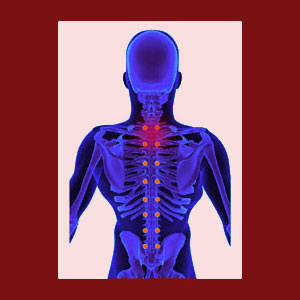
A hypomobile facet joint demonstrates a deficient range of movement and might be completely fused in some instances. Hypomobility always denotes that the joint structure is limited in its range of motion (ROM), but this diagnosis does not imply that the condition is inherently painful or particularly problematic.
Hypomobility is a relatively common consequence of some types of aging and injury to the spinal facet joints. Since these structures are designed to facilitate a highly specific range of spinal motion from level to level, reductions in joint functionality might have potentially painful or functionally-limiting consequences to the regional spine or the overall vertebral column.
This focused essay explores the causes and symptoms of facet joint hypomobility. We will also examine some of the most effective treatment options for hypomobile facet structures.
Causes of Hypomobile Facet Joint Issues
Hypomobility affecting the facet joints can be created by a diversity of possible causes and contributors including any or all of the following factors in any given patient:
General arthritis can create bone spur growth that might interfere with joint mobility and eventually might even cause the joint to fuse solid in rare instances. The vast majority of hypomobility which is experienced in the facet joints is a direct result of normal to advanced osteoarthritic accumulation inherent to aging.
Congenital defects in the joint deign itself might create impediments to normal motion. These defects might be primary congenital or developed as secondary to existing congenital abnormalities.
Misalignment of the facet joints due to spondylolisthesis, scoliosis, hyperkyphosis or hyperlordosis might contribute to joint hypomobility.
Injury or surgery can damage the joint and cause it to fuse upon healing.
Symptoms of Hypomobile Spinal Joints
Hypomobility does not have to be symptomatic In fact, since mild to moderate hypomobility is considered basically normal as a person ages. The vast majority of these less significant cases are likely to produce little, if any, symptomatic activity.
Some patients will experience tightness or stiffness in the area. These sensations might be ever-present or might worsen and ameliorate due to many circumstances. Many of these patients will demonstrate objective decreases in range of motion in particular spinal segments upon evaluation.
Some patients might experience varying degrees of pain when trying to move the hypomobile joint. Pain might be minor or may be severe. In fused joints, pain is actually less common than in joints with largely limited functionality, since the fusion tends to protect the joint from painful vertebral interactions.
Patients who persist through pain and try to forcibly mobilize a fused facet joint might facilitate fracture of the vertebral bone at any weakened location. This is rare, but has been reported during physical therapy sessions in mostly older patients and those with pars interarticularis defects.
Hypomobile Facet Joint Treatment
Treatment for hypomobile facet joint conditions is usually conservative in nature. Remember that treatment is not inherently needed and is usually only rendered when the patient is experiencing significant pain or functional loss. In these instances, physical therapy, chiropractic, exercises, stretches, diathermy and other noninvasive modalities are typically employed. There is also no shortage of pharmacological products typically employed for chronic hypomobility pain problems. Nerve blocks might be effective for moderate term relief of persistent pain issues in the hypomobile joint structure.
In very severe instances of hypomobility or joint fusion where pain is severe and functional impairment is objectively noted, surgery might be performed in order to restore normal joint movement or completely fuse the joint or vertebral bones. The type of procedure ranges greatly, depending on the nature of the causative process. These techniques range from minimally invasive laser procedures that can remove osteophyte and arthritic accumulations from the joint surfaces, to full spinal fusion treatment for facet joint issues created by atypical spinal curvature or vertebral slippage conditions.
Facet Joint Pain > Causes of Facet Joint Pain > Hypomobile Facet Joint





